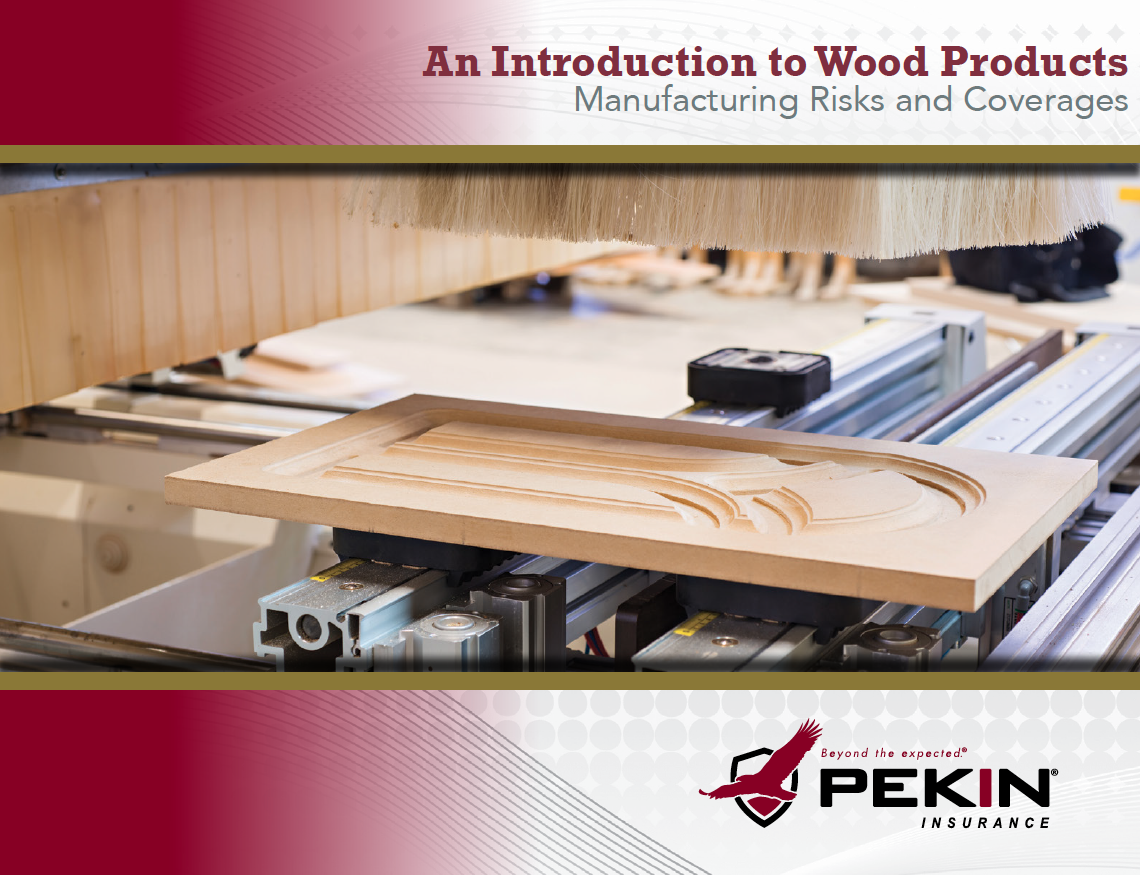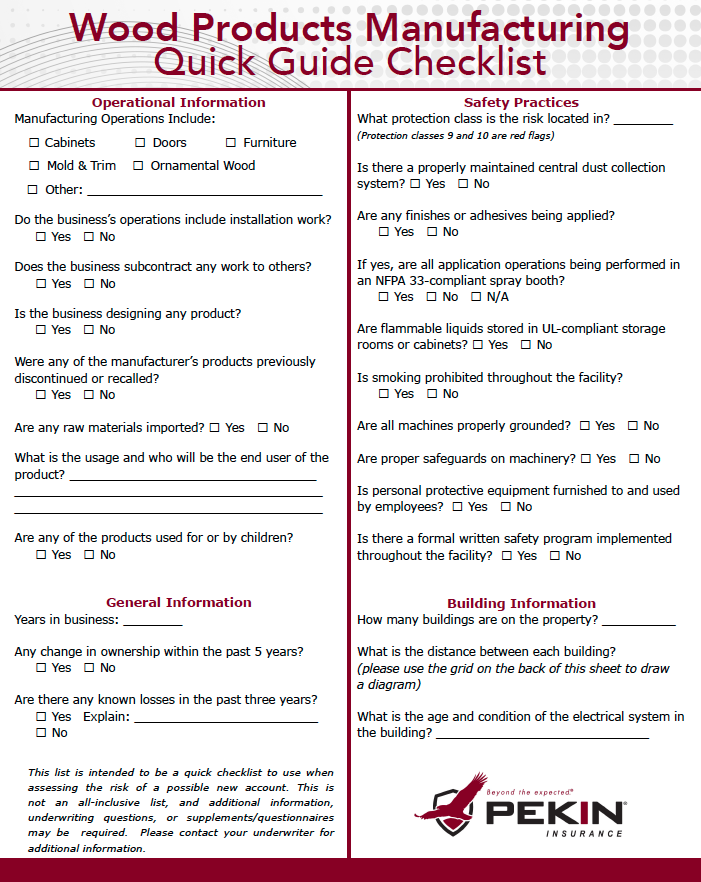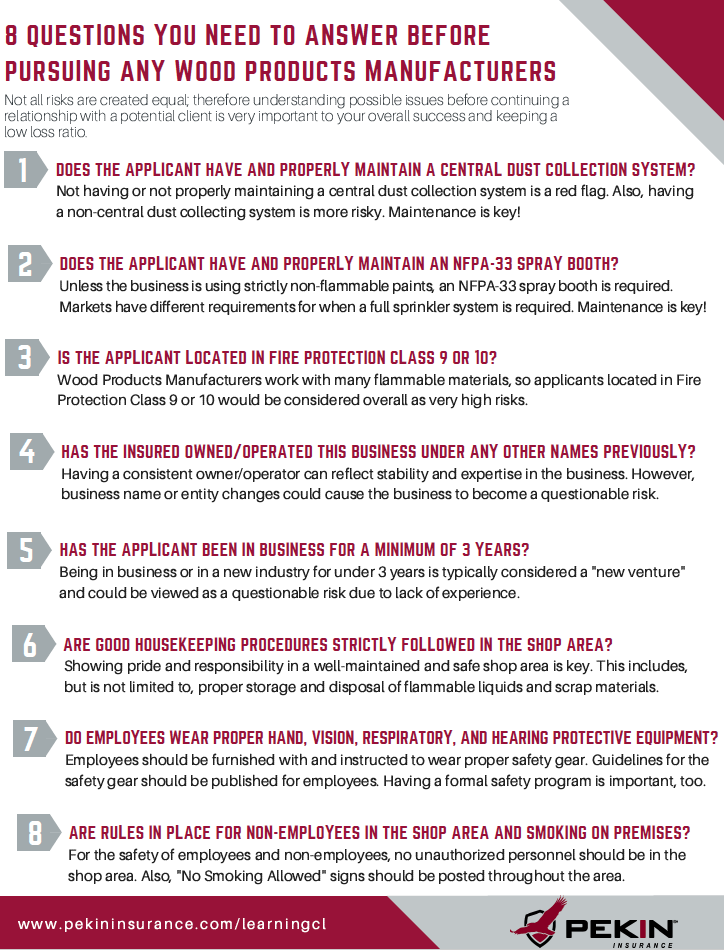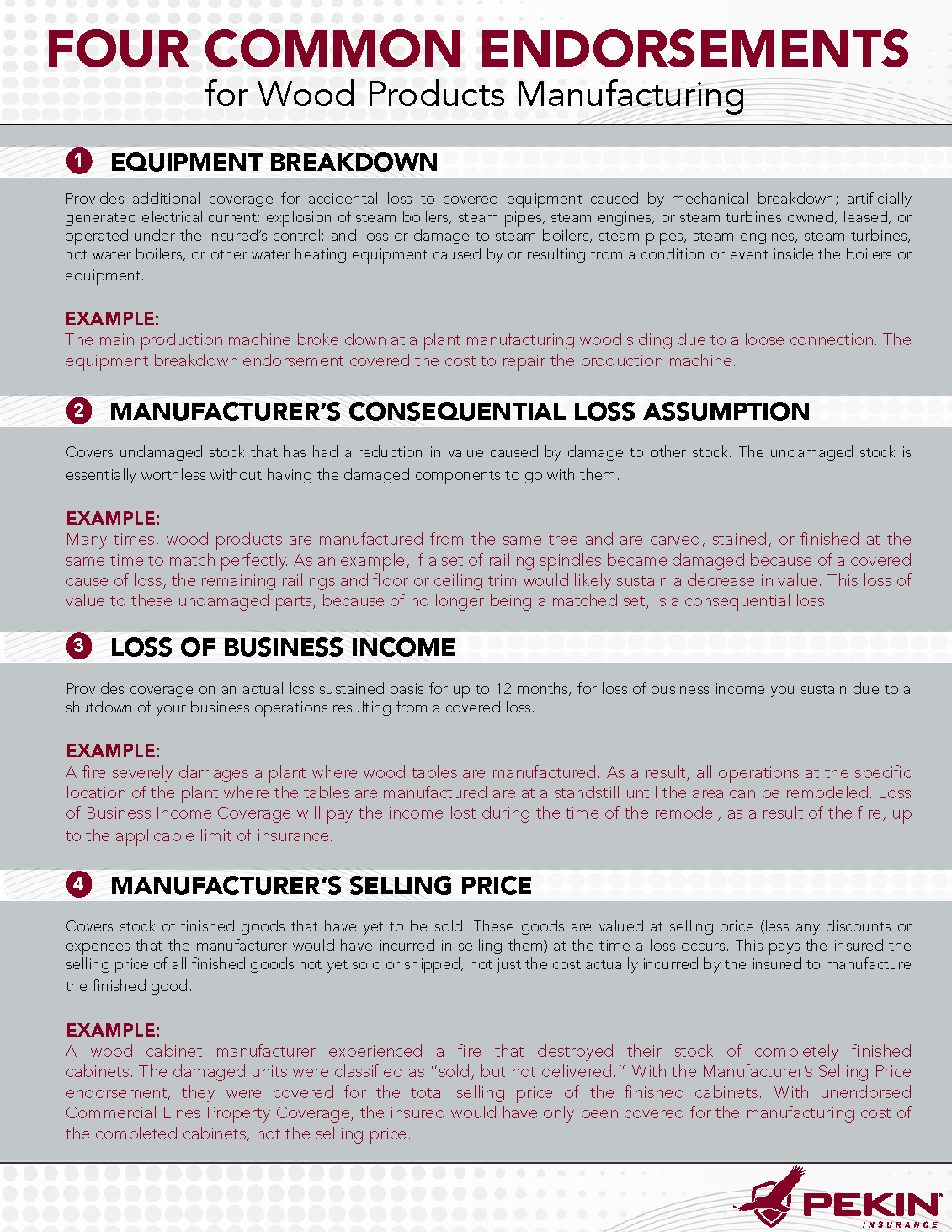When working with wood products manufacturing clients, it is important to understand the risks associated with their trade and how you can help them mitigate those risks. This blog post focuses on risks associated with the dust and shavings from manufacturing wood products.
Common Risks Associated With Wood Dust:
-
Fires: You can’t talk about wood products manufacturing risks without discussing the fire hazards of wood dust. After all, saw dust and other wood shavings are often used as fire starters! Woodworking facilities are prone to fires and explosions due to large quantities of fuel in the form of wood products, sawdust, and flammable materials such as paints and solvents. Once a fire is started, it may be very difficult to control.
-
Health: Wood dust poses a risk to the health and safety of workers. The wood dust can cause irritation, asthma, allergic reactions, and cancer. The dust is most commonly inhaled, but it can also be lodged into skin when using compressed air. However, workers should never be permitted to blow-down accumulated dust with compressed air. Blowing dust with compressed air will create the very type of dust cloud that presents the greatest explosion hazard.
Controls for Wood Dust Risks:
- Personal Protection Equipment (PPE): Ensure all workers wear a respirator dust mask that has an inhale valve and a separate exhale valve. The mask should have a rubberized face gasket that forms a proper seal around the nose and mouth. The disposable-type masks leak air around the cheeks which reduces their effectiveness. Other general personal protection equipment could include special footwear, clothing, gloves, safety glasses, hearing protection, and helmets.
-
Dust Collection Systems: Make sure machinery includes local exhaust ventilation (LEV), which removes dust at or near its source. Exhaust hoods should be located as close as possible to the emission source, either on the woodworking machinery itself or near to the machine. The local exhaust systems should have an efficient air cleaning device. Also, the shop should include a properly functioning NFPA-EAW 664 central dust collection system.
There are other dust collection actions that should take place in the facility. Hand tools should include collection bags—for example, sanders and cutting equipment. This reduces the risk of the dust becoming airborne and being inhaled by the operators. Furthermore, the National Fire Protection Association (NFPA) rules require collecting the sawdust, chips, shavings, and wood strings that fall onto floors and work surfaces.
- Housekeeping: Preventing the buildup of dust is one of the key methods for controlling fire and explosion hazards. To ensure dust is removed from the entire facility, regular cleaning must take place. This cleaning should be completed with the use of wet wiping or vacuuming. All areas of the building should be cleaned, including the structural elements of the building, such as sills, beams, and roof rafters.
- Eliminate the Source: To decrease the likelihood of a fire, wood products manufacturers can take steps to reduce the chances of an ignition occurring. Some examples include:
- Remove all naked flames such as burner flames, welding or cutting torches, matches, cigarette lighters, and heaters.
- Control hot surfaces like internal combustion engines, frictional sparks, heated wires, glowing metals, and overheated bearings.
- Ground electrical equipment to prevent discharge of static electricity.
- Training: Workers should be trained on proper dust collecting housekeeping, emergency evacuation procedures, and first line of attack firefighting techniques.
Dust collection is only one common risk mitigation tool associated with wood products manufacturing. Be sure to evaluate a business’s operations entirely as each business will deal with risk mitigation differently.
Note: The writings of Pekin Insurance are intended to be used for educational purposes only as well as to give you general information and an understanding of insurance. Pekin Insurance is not held to the accuracy or completeness of any information on this site or that is found by following any link on this site. Please refer to the policy, the specific coverage forms, and the endorsements for a detailed description of the coverages, limitations, and exclusions that apply. Each coverage scenario and policy are unique, so examples written by Pekin Insurance are not guaranteed.




